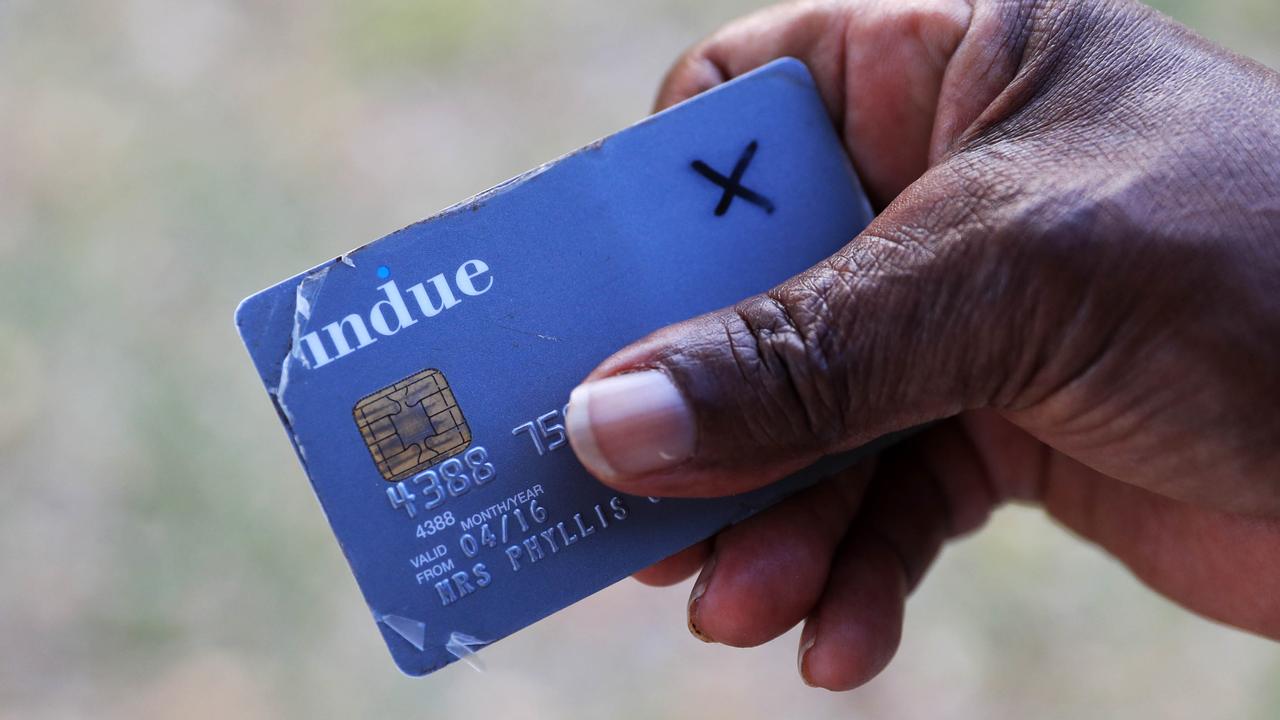Bad old days surface as through a boozy haze
HINTS that grog bans may be lifted have sent ripples of fear through the Cape.

ON A diamond day in Aurukun, the big Queensland sky seems limitless. The kids sing hello and run barefoot in the red dust. Beneath a spreading mango tree, the old men talk quietly, their eyes crinkled by the smoke of roll-your-owns. The women are rushing in and out of the community store, while stray dogs loll in a puddle by the entrance, panting sleepily in the heat.
On a day like this the grog, the violence and the rumbling bellies of unfed, under-schooled children seems to belong to another place, another time.
This day - Thursday of this week - was an important one in Aurukun. People had turned out to hear Federal Court judge Andrew Greenwood make the fifth and final determination in the Wik native title case, ending a 20-year legal battle over the status of pastoral leases on Cape York Peninsula that went to the High Court and changed the law of the land. Rebecca Wolmby, 79, joined in the applause when the hard-fought settlement was confirmed. But her mind was elsewhere.
Another fight looms and it, too, is steeped in a history that most people want to put behind them. This is the story of Aurukun and alcohol and it is central to the national debate on the future of statutory restrictions on the sale and possession of liquor in Aboriginal homelands. For Wolmby and her husband, Silas, it is an intensely personal issue. If the grog returns they won't be staying. "We will move," the proud old lady says. "We will go away from this place, back to our homeland."
As detailed today by this newspaper, a careless remark by Campbell Newman during the Queensland election campaign relit the fuse to the political powder keg that is booze and black communities. Responding to a journalist's question about alcohol management plans that ban or limit the legal supply of drink to the state's 19 indigenous townships, the future premier questioned why Aborigines shouldn't be able to come home and have a beer, just like anyone else.
When the state government announced last week it would review existing AMPs, in line with Newman's election "commitment", the issue exploded.
Noel Pearson, an architect of the AMP system, wrote in Inquirer last Saturday how he "shivered with concern" at the prospect of the grog controls being rolled back; Marcia Langton, a professor of indigenous studies at the University of Melbourne who worked in Aurukun earlier in her career, warned that 20 years of effort to contain the devastating effect of alcohol abuse would be destroyed.
Federal Indigenous Affairs Minister Jenny Macklin said if change had to happen, it could not be at the expense of women and children; former ALP national president Warren Mundine spoke of his fear that the "nightmare" of the drinking culture would be revived; the woman who led the federal intervention into Northern Territory Aboriginal communities, Sue Gordon, insisted that no one but the suppliers of booze would benefit.
Other voices were raised, too. Queensland Minister for Aboriginal and Torres Strait Islander Affairs Glen Elmes was in furious agreement with Macklin that the vulnerable would be protected and any community that applied to ease existing alcohol restrictions would have to demonstrate there would be no backsliding on social progress.
Social Justice Commissioner Mick Gooda, a son of the Gangulu people of central Queensland, said indigenous people had a right to be consulted on how they lived their lives. Indigenous health activist Gracelyn Smallwood supported the argument that "imposed solutions" such as prohibition had conspicuously failed. And in the middle of it all, the High Court granted Palm Island woman Joan Maloney special leave to challenge the constitutionality of the alcohol management plan covering that 3000-strong north Queensland community.
Anthropologist and indigenous linguist Peter Sutton had heard it all before in Aurukun, dating back to his arrival there in 1973 when it was still a Christian mission of the Uniting Church and largely grog-free. The push to bring in alcohol was just beginning. "The debate was fairly clearly defined," he remembers, "and it basically came down to women having a safety-first position and putting a different position to the men."
That changed across time, as women joined the men on the grog. But generally it was the men who asserted that drinking was a right, says Sutton, who maintains useful contacts in the community.
"It tended to be put in terms of a political rights framework made by the pro-drinking lobby who tended to be men," he says.
In those days alcohol was banned on Aboriginal communities by law, part of the systematic control of indigenous communities by the state. Aurukun was of particular interest to the Queensland government. The settlement, a cluster of faded yellow and blue homes on the Western Cape two hours' drive on the dirt from Weipa, is hemmed in by some of the world's richest deposits of bauxite, the main source of aluminium.
In 1978, the mission was taken over by the state, which the community resisted. The compromise was to declare it a shire under special legislation pursuant to the local government act in Queensland. Along with Mornington Island in the Gulf of Carpentaria, Aurukun led the way with this limited form of self-management.
Then, in 1984, a youthful state minister named Bob Katter pushed through another law to give the fledgling Aboriginal councils power to regulate and control alcohol. Again, Aurukun was in the vanguard. A year later, it opened a licensed beer canteen.
Now here's the twisted irony. The building that housed it was supposed to be an adult education centre. Instead, it became something resembling a human zoo. From time to time the opening hours would vary, but the routine rarely did. Beer was served by the jug and generally consumed straight from the container, the nicety of glasses being dispensed with. When time was called, there would be a rush on the bar before the steel mesh clanged down and the bare, concrete floor was hosed out. Long into the night, people would sit at splintery trestle tables working their way through jug after jug of flat, warm beer. The consequences were appalling.
Researcher David Martin found that by 1991-92 the Aurukun beer canteen had racked up annual sales of $1,991,844 - amounting to $2423.16 for each of the settlement's 822 residents, man, woman and child. The profit to its owner, the council, was $690,157.
By 1996-97, turnover had increased to $2,387,533 and the net profit was $1,027,729. This journalist was told, during a visit to Aurukun in the early 90s, that earnings from the canteen represented about one-quarter of the council's income and was the biggest line item on its budget after federal grants for work-for-welfare programs.
Martin does not dispute this: "It was without doubt by far the largest source of untied funds to local government and that ... created an impossible conflict of interest," he says. "Aurukun Shire Council both benefited from and depended upon income from the sales of alcohol. At the same time, it was responsible for the by-laws which were supposed to control it."
In Aurukun, children started to go hungry, concerned teachers and hospital staff reported. Spending on takeaway food soared. The situation was replicated across Cape York. Martin detailed how, in 1985-86, not long after the grog started to flood in, consumption in one unnamed township was the equivalent of 20 litres of pure alcohol a year for the population aged 15 and older - nearly four times the average intake in Queensland, as reported by the Australian Bureau of Statistics in 1990. Indicative consumption rates on the peninsula would rise to a staggering equivalent of 30 litres of alcohol a year, he found.
At least 50 per cent of injuries and 88 per cent of assault injures were identified as being associated with alcohol, while the early death rate attributed to drinking was 21 times the Queensland average.
Sutton says an Aborigine who lived to adulthood on Cape York in the 19th century had every prospect of surviving to old age; not so her great-great-grandchildren after they took to drinking. "There are very few people in their 70s and 80s in Aurukun ... the infants who used to die are not dying now in large numbers, which is a hugely positive thing, but they are growing up to die of heart attacks in their 30s and 40s or from renal failure due to drinking," he says.
By the 1990s, Aurukun had become a byword for indigenous dysfunction. The community, understandably, was appalled by the notoriety. Something else that distinguishes it is what Martin, 62, describes as the "feistiness" of its politics. His association with Aurukun dates to 1975, when he pitched up with two friends to see for himself what life was like in Aboriginal Australia. "There has always been prominence for women in the culture," he says. "And that is very different to gender relations than what you would find in places like the central desert."
The beer canteen had given way to a new drinking spot, the Three Rivers Tavern, which boasted tiled floors and a better setting for the binge drinking. Finally, the community declared enough. In 1994, Aurukun moved to adopt the first legislated controls on alcohol on Cape York. A limit of 10 cartons of beer and two litres of other alcohol per vehicle was imposed. The idea was to control the influx of sly grog on what locals called the 'Moselle wagons' that came down the road from Weipa.
John Adams, a Uniting Church minister who was involved in community development in Aurukun through the church-backed Yalga-binbi Institute, says a carton of contraband beer was selling for $200, a cask of wine for $80.
When surveyed, about 90 per cent of the community believed people had a right to drink. Yet as the social problems mounted, so did demands for a new approach to alcohol, especially from Aurukun's women. A review of conditions on the Cape communities by former corruption commissioner Tony Fitzgerald QC proved to be the catalyst for real change. With strong backing from Pearson, a prototype AMP was set up Aurukun in 2003; more followed, at the instigation of then premier Peter Beattie. Five years later his successor Anna Bligh legislated to ban Aboriginal councils from holding a liquor licence.
Queensland government data suggests the restrictions have worked, at least in the case of Aurukun. It is one of nine communities with outright bans on the sale and possession of alcohol, while others, such as Palm Island, allow limited purchases under their AMPs. Hospital admissions in Aurukun for assault-related injuries fell from 22 per 1000 persons in 2002-03 to 7.4 admissions in 2010-11 and school attendance increased from 38 per cent in 2008 to 71 per cent in term 1 this year, according to the latest figures.
The results are more equivocal in other communities, prompting new Liberal National Party MP for the state seat of Cook, covering Cape York, David Kempton, to question how effective the AMPs really are. "I am not convinced that the school attendance rates and shift in alcohol-related crime are necessarily a direct consequence of it (the program of restrictions)," he tells Inquirer. "It may be just the fact that people's awareness around alcohol has been raised."




